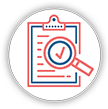
Clinical judgment has become nursing’s favorite buzzword lately, and evidence supports a critical need to find effective ways to foster this skill in nursing students(1-6).
Schools of nursing are tasked with teaching clinical judgment amid a shortage of qualified educators, lack of clinical placement opportunities, and limited time and resources for high fidelity simulation(9).
Practicing Clinical Judgment Skills
Tanner’s Clinical Judgment Model (CJM) reinforces that time and experience are essential to foster the skills needed in new graduate nurses. Nursing students need the practice to become proficient in the clinical reasoning skills of noticing, interpreting, responding by taking action, and reflecting (10). Students also need a safe environment to practice these skills with faculty who facilitate making deeper connections with their thinking (14-20).
Traditionally, programs look to clinical and simulation settings to provide this practice through experience (11-13), but nursing students spend more time in the traditional classroom than anywhere else.
Educators must find ways to use the classroom to create experiences that foster clinical judgment skills as well. The classroom must be transformed into a safe, “practice” environment that allows each student to gain the confidence needed to think, act and feel like a nurse using meaningful active learning strategies.
Our Story
As practicing nurses, we understood firsthand the importance of confidence in clinical judgment, especially as patients have become more complex. At the same time, our roles as academic nurse educators made the challenges of teaching clinical judgment to students evident.
How do we prepare new graduates to hit the ground running when all evidence points to experience and time as the most important factors in developing this skill? We recognized that all education environments – not just clinical and simulation – needed to work toward this goal.
To transform our traditional classroom into a “practice” environment, we worked to create a space for students to put their knowledge of various physiological conditions to use.
How We Made Learning Active
Students participated in a weekly activity using low-fidelity simulation videos to promote their clinical judgment. Each week the format was consistent. First, a client report was presented as a preparatory assignment.
The faculty acted as practicing nurses, providing a recorded “patient handoff” that the students viewed on their own. Students were asked to use a “report sheet” that prompted them to record pertinent information guiding them to notice what was important.
In addition, the faculty provided prompts for research which varied based on the scenario and the environmental, social, and personal factors that nuanced the care of each client.
In the process of collecting this data, the students were asked to identify additional information that they would like to know, indicating their ability to cluster cues needed to make informed decisions regarding care.
In the classroom, students were put into groups and assumed care of the client, taking turns choosing actions to implement in the video case study. Other groups offered additional suggestions during the discussion.
Students hypothesized interventions, discussed data that supported their decisions, and considered potential outcomes. The progression of the cases became dependent on the student’s choices.
With facilitation from the faculty, students were prompted to make new clinical judgments based on changes in the client’s condition, demonstrating their ability to “reflect in action” and engage in flexible thinking.
Sometimes the outcomes were positive and sometimes they were not. Regardless, the students were then asked to engage in “reflection on action” via discussion posts following each simulation.
Tanner’s CJM reinforces the importance of “Reflection on action” in the moment. Student responses indicated that they gained confidence in clinical judgment by engaging in this activity.
Students initially indicated that they felt anxious about choosing the correct answer so they preferred to do nothing rather than make a mistake. As their confidence grew, they began to reflect that there were many appropriate actions to choose from, and the “best” action for an individual client was based on context.
This activity offered a way to transform the traditional classroom into an environment in which students could practice their clinical judgment skills, collaborate with one another and gain confidence in their knowledge.
Video Guide
Use this link to view a concise guide to making learning active in your classroom!
- Make your classroom a safe, judgment-free practice space and create a relationship with your students that allows them to learn from their mistakes. We know that the application of knowledge and the experience gained is what drives growth in clinical judgment (10). We must transform all learning environments into places that encourage thinking like a nurse.
- Guide your students to understand that there is more than one way to approach a problem. Allow them to make their own decisions and the opportunity to defend their choices. Educators should present themselves as a guide, offer evidence-based suggestions, and encourage discussion that drives students to connect data that sheds light on the gray area that assists them in making decisions.
- Most of all, be flexible and have fun. This activity has the most value when the educator has the ability to cope with ambiguity themselves and is willing to facilitate learning in whichever direction the students take you! Nurses have a unique opportunity to connect with individuals. We know that a one-size-fits-all approach doesn’t work in patient care. The ambiguity and our flexibility keep our practice exciting, and we are the coaches that can share that joy with students.
We know that clinical judgment is needed for safe clinical practice(1-4). Traditionally, the focus of developing this skill has been the clinical environment and, more recently, high-fidelity simulation (11-13). Students spend more time in classrooms and in front of computer screens than anywhere else in a nursing curriculum.
Nursing educators have the responsibility and great privilege to transform these non-clinical settings into an extension of the practice environment. This methodology is just one successful strategy that students have told us is challenging but engaging. They report that it has them “thinking like a nurse” and, perhaps most importantly, it has made them feel like confident caregivers.
When we think about our roles as nursing educators we are acutely aware of the informal titles we hold. We are certainly mentors and instructors but perhaps most importantly we are role models. The data we collected on the success of this methodology shows that it increases confidence and improves clinical judgment outcomes, but we truly believe that a large part of the success can be attributed to the fact that our students see how much we, as educators, enjoy collaboration.
Students begin to see that the ambiguity of clinical judgment and the process of noticing, interpreting, responding, and reflecting are what makes our work so exciting. When they see us being flexible, creative, and engaged it encourages them to model the same behaviors, and we feel this is more valuable than any grade they ever achieve on a test.
Every interaction with a student is an opportunity to promote resilience in the future nursing workforce. Ask yourself, am I showing my students what it means to be a nurse? When I teach about clinical judgment, am I checking another disease or condition off the list or am I helping to shape the mind of a future nurse?
Closing Thoughts
We believe the emphasis on clinical judgment has been one of the most rewarding developments in nursing education because we finally feel like we have language that makes the implicit work of nurses explicit.
We hope that you find this resource useful and that you find joy in your classroom while implementing it!
Recommended Resources
- We utilized both Lippincott CoursePoint + and ATI products to facilitate simulations in this course, and their references are listed here. In addition, we would love to invite you to check out our YouTube account where we have posted more information about this activity and plan to post additional resources in the future. Please reach out to us there. We can’t wait to connect!
- Overbaugh, J.L.H.K.H.C. K. (2021). Lippincott CoursePoint Enhanced for Brunner & Suddarth’s Textbook of Medical-Surgical Nursing (15th ed.). Wolters Kluwer Health.
- Holman, H. C., Williams, D., Johnson, J., Sommer, S., Ball, B. S., Morris, C., Leehy, P., Hertel, R., & Assessment Technologies Institute (Contributors). (2019). Real Life RN Medical Surgical 4.0. Assessment Technologies Institute.
References
- American Association of Colleges of Nursing. (2021) The Essentials of Baccalaureate Education for Professional Nursing Practice. Washington, DC: AACN.
- Herron, E. K. (2018). New graduate nurses’ preparation for recognition and prevention of failure to rescue: A qualitative study. Journal of Clinical Nursing, 27(1–2), e390–e401. 10.1111/jocn.14016
- Huston, C., Phillips, B., Jeffries, P., Todero, C., Rich, J., Knecht, P., Sommer, S., Lewis, M.P. (2018). The academic practice gap: Strategies for an enduring problem. Nurs Forum, 53:27-34. DOI: 10.1111/nuf.12216
- Kavanagh, J. M., & Sharpnack, P. A. (2021). Crisis in competency: A defining moment in nursing education. Online Journal of Issues in Nursing, 26(1).https://doi.org/10.3912/OJIN.Vol26No01Man02
- Clemett, V. J., & Raleigh, M. (2021). The validity and reliability of clinical judgement and decision-making skills assessment in nursing: A systematic literature review. Nurse Education Today, 102, 104885.
- New Nurse Readiness Survey: Closing the Education-Practice Gap. Wolters Kluwer. https://www.wolterskluwer.com
- National Council of State Boards of Nursing (2018). Strategic Practice Analysis. NCSBN Research Brief, (71).
- NCLEX-RN Examination: Test Plan for the National Council Licensure Examination for Registered Nurses. (2019). National Council of State Boards of Nursing. https://www.ncsbn.org/public-files/2019_RN_TestPlan-English.pdf
- Rosseter, R. (2019). Fact sheet: Nursing faculty shortage. American Association of Colleges of Nursing.
- Tanner, C. A. (2006). Thinking like a nurse: A research-based model of clinical judgment in nursing. The Journal of Nursing Education, 45(6), 204–211. https://doi-org.ju.idm.oclc.org/10.3928/01484834-20060601-04 PMID:16780008
- Lasater K. Clinical judgment development: using simulation to create an assessment rubric. J Nurs Educ. 2007;46(11):496-503.
- Lasater, K. (2011). Clinical judgment: the last frontier for evaluation .Nursing Education in Practice 11:86-92
- Manetti, W. (2018). Evaluating the clinical judgment of prelicensure nursing students in the clinical setting. Nurse Educator, 43(5), 272-276.
- Bandura, A. (1977). Self-efficacy: toward a unifying theory of behavioral change. Psychological review, 84(2), 191.
- Bandura, A., (1997). Self-efficacy: The exercise of control. New York: W.H. Freeman and Company.
- Benner, P. (1982). From novice to expert, American Journal of Nursing, 82(3), 402-407.
- Benner, P. (1984). From novice to expert. Menlo Park, 84(1480), 10-1097
- Lee, K. C., & Wessol, J. L. (2022). Clinical Reasoning, Judgment, and Safe Medication Administration Practices in Senior Nursing Students. Nurse Educator, 47(1), 51-55. 13.
- Sterner, A. , Säfström, E. , Palmér, L. , Ramstrand, N. , & Hagiwara, M. A. (2020). Development and initial validation of an instrument to measure novice nurses’ perceived ability to provide care in acute situations–PCAS. BMC Nursing, 19(1), 1–9. 10.1186/s12912-020-0406-3
- ATI. (n.d.). Six Clinical Judgment Functions of Layer 3 of the Clinical Judgment Measurement Model. [infographic]. Retrieved December 15, 2022 from https://www.atitesting.com/docs/default-source/default-document-library/six-clinical judgement-functions.pdf?sfvrsn=516a5d5_0
Elizabeth Landers, Ed.D., MSN, RN & Josephine Dawes, MSN, RN
Liz and Josie are both Professors of Nursing at Endicott College in Beverly, Massachusetts as well as practicing nurses in the clinical setting. They have over 30 years of practice experience between the two of them in various roles and settings, including both clinical and academic leadership.
In the classroom, they have found a passion for teaching clinical judgment and are currently engaged in research on strategies that promote clinical reasoning and reliable instruments to capture the complex cognitive processes that define nursing practice.
If you have questions, do not hesitate to contact us!
Email: ElizabethandJosephine@gmail.com
The Ultimate Solution to Develop Clinical Judgment Skills
KeithRN’s Think Like a Nurse Membership
Access exclusive active learning resources for faculty and students, including KeithRN Case Studies, making it your go-to resource.






